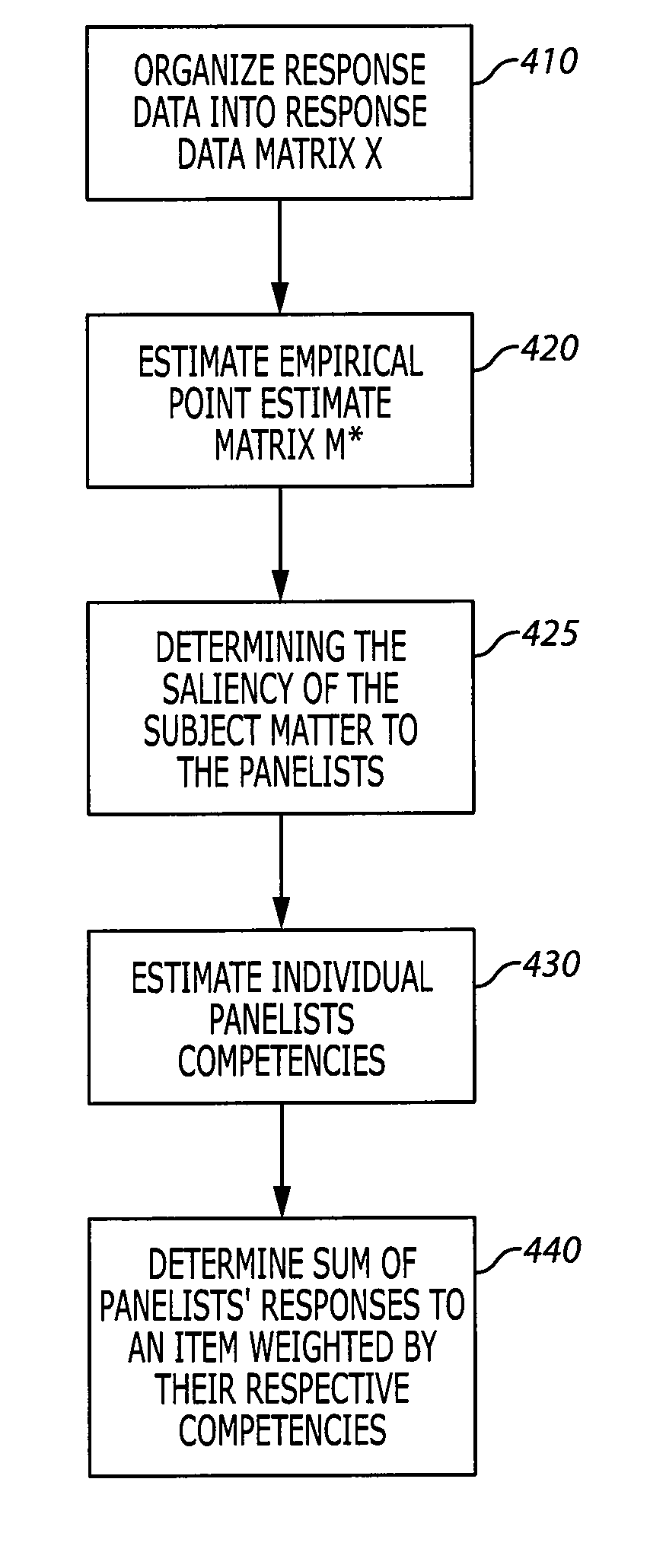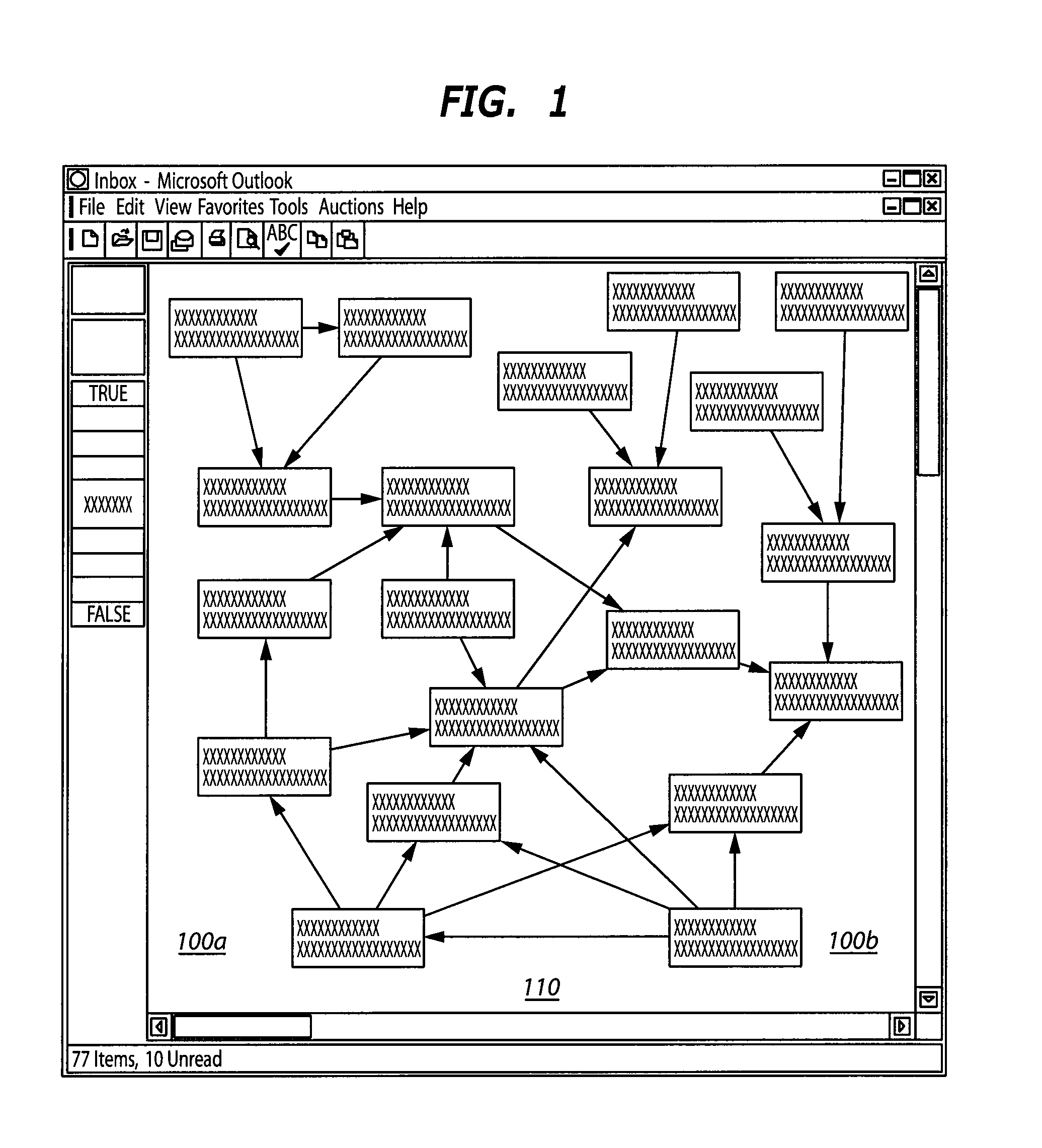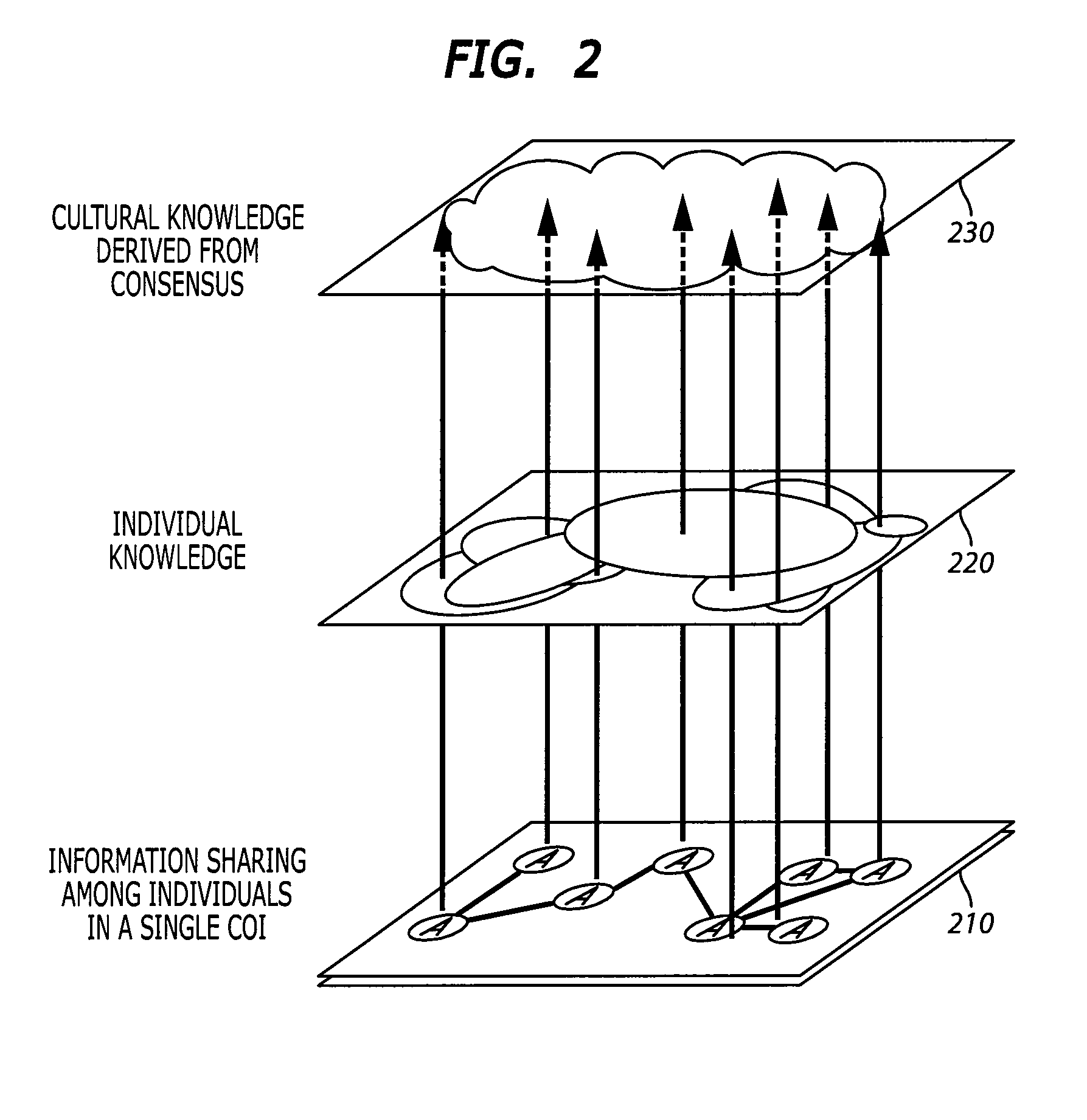System and method for consensus-based knowledge validation, analysis and collaboration
a knowledge validation and consensus-based technology, applied in the field of system and method for consensus-based knowledge validation, analysis and collaboration, can solve the problems of little effort to provide useful metrics for validation, the ability of collaboration facilities to be mostly under-utilized, and the potential of many potential users to achieve the effect of reducing the number of collaboration tools, determining the saliency of the subject matter, and estimating the competence of each panelis
- Summary
- Abstract
- Description
- Claims
- Application Information
AI Technical Summary
Benefits of technology
Problems solved by technology
Method used
Image
Examples
Embodiment Construction
[0027]The system and method of the present invention are built around consensus analysis. Consensus analysis is based on a few simple, but powerful, ideas, i.e., knowledge is both distributed and shared. For any knowledge domain, and any group of subject matter experts (“SMEs”) in this domain, these SMEs possess different experiences; hence, they know different things, and some of them know more than others. FIG. 2 depicts the sharing of information among individuals and the “cultural knowledge” derived from consensus. Information sharing, e.g., among individuals A-H in layer 210 of FIG. 2, facilitates the availability of a much larger pool of information with non-uniform distribution of knowledge across members of the same community of interest. Along with the differential expertise one typically finds among members of a community of interest, there also exists some knowledge that is widely-shared and recognized as being “essential.” In fact, this knowledge may be so fundamental an...
PUM
 Login to View More
Login to View More Abstract
Description
Claims
Application Information
 Login to View More
Login to View More - R&D
- Intellectual Property
- Life Sciences
- Materials
- Tech Scout
- Unparalleled Data Quality
- Higher Quality Content
- 60% Fewer Hallucinations
Browse by: Latest US Patents, China's latest patents, Technical Efficacy Thesaurus, Application Domain, Technology Topic, Popular Technical Reports.
© 2025 PatSnap. All rights reserved.Legal|Privacy policy|Modern Slavery Act Transparency Statement|Sitemap|About US| Contact US: help@patsnap.com



